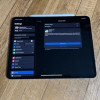How to block the ultrasonic signals you didn’t know were tracking you
Dystopian corporate surveillance threats today come at us from all directions. Companies offer “always-on” devices that listen for our voice commands, and marketers follow us around the web to create personalized user profiles so they can (maybe) show us ads we’ll actually click. Now marketers have been experimenting with combining those web-based and audio approaches to track consumers in another disturbingly science fictional way: with audio signals your phone can hear, but you can’t. And though you probably have no idea that dog whistle marketing is going on, researchers are already offering ways to protect yourself.
The technology, called ultrasonic cross-device tracking, embeds high-frequency tones that are inaudible to humans in advertisements, web pages, and even physical locations like retail stores. These ultrasound “beacons” emit their audio sequences with speakers, and almost any device microphone—like those accessed by an app on a smartphone or tablet—can detect the signal and start to put together a picture of what ads you’ve seen, what sites you’ve perused, and even where you’ve been. Now that you’re sufficiently concerned, the good news is that at the Black Hat Europe security conference on Thursday, a group based at University of California, Santa Barbara will present an Android patch and a Chrome extension that give consumers more control over the transmission and receipt of ultrasonic pitches on their devices.









































































